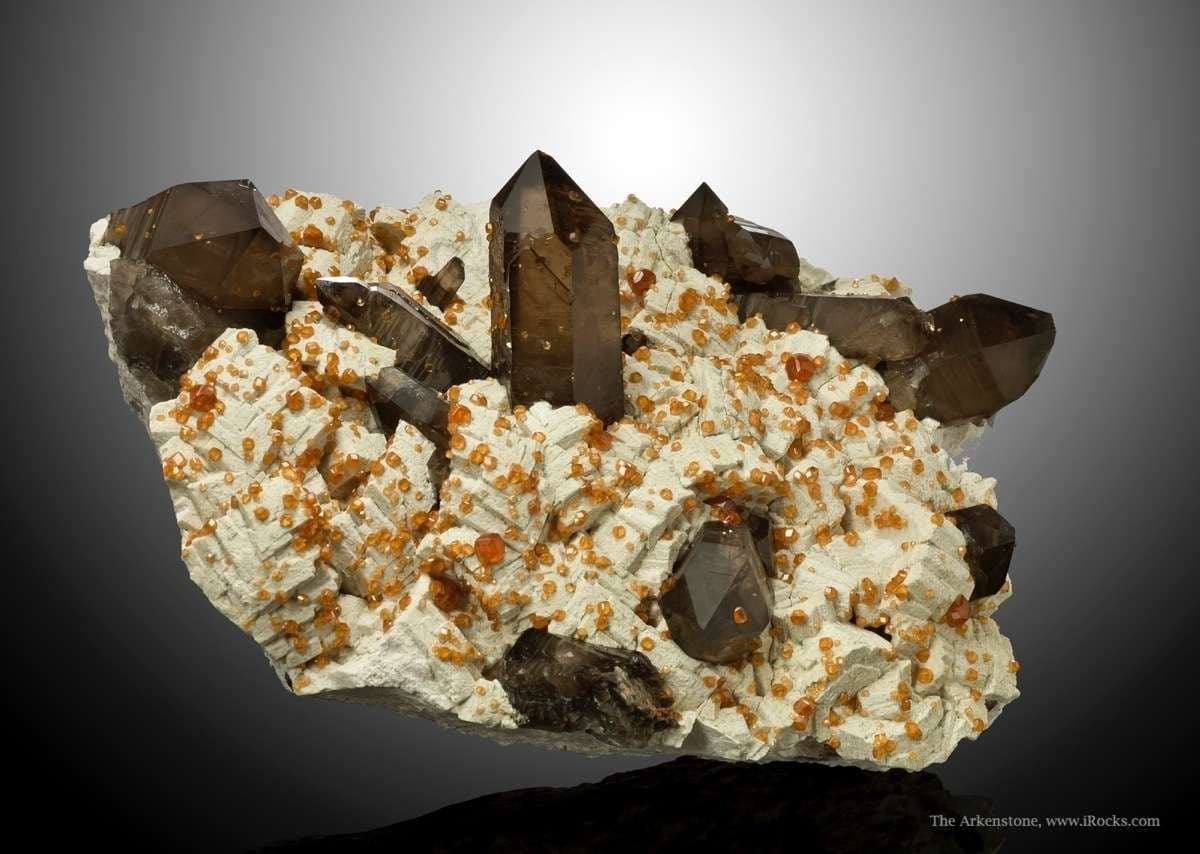
How Does Quartz Form?
Quartz is one of the most abundant minerals on earth. Learn how quartz forms and how its most popular varieties get their colors.
2 Minute Read
What is Quartz?
Quartz is the second most abundant mineral in the Earth’s crust. It comes in many different varieties. Amethyst, citrine, and agate are just a few popular gem forms of quartz.
In the most basic sense, quartz is the crystalline form of silicon dioxide. When quartz grows into large crystals, lapidaries can cut varieties such as rock crystal, smoky quartz, amethyst, or citrine. Quartz can also grow into stones made of tiny microcrystals. In this case, lapidaries can cut chalcedonies, like agate or jasper.
How Does Quartz Form?
Most quartz forms in either igneous rocks or environments with geothermal waters.
In igneous rocks, quartz forms as magma cools. Like water turning into ice, silicon dioxide will crystallize as it cools. Slow cooling generally allows the crystals to grow larger.
Quartz that grows from silica-rich water forms in a similar way. Silicon dioxide dissolves in water, like sugar in tea, but only at high temperature and pressure. Then, when the temperature or pressure drops, the solution becomes saturated, so quartz crystals form.
How Does Smoky Quartz Form?
Quartz gets smoky brown shades when the rocks around it contain radioactive elements. Over time, the natural radiation alters the crystal,…
Related Articles
Quartz Value, Price, and Jewelry Information
Why are Topaz and Citrine Gemstones Misidentified?
Quartz Toxicity: Understanding the Risks for Jewelers and Wearers
Ouro Verde Quartz: History and Treatment
Latest Articles
Milarite Value, Price, and Jewelry Information
Appraising Pearls: How to Grade Pearls
Agate Buying Guide
Carving Techniques for Handling Inclusions in Transparent Gems
Never Stop Learning
When you join the IGS community, you get trusted diamond & gemstone information when you need it.